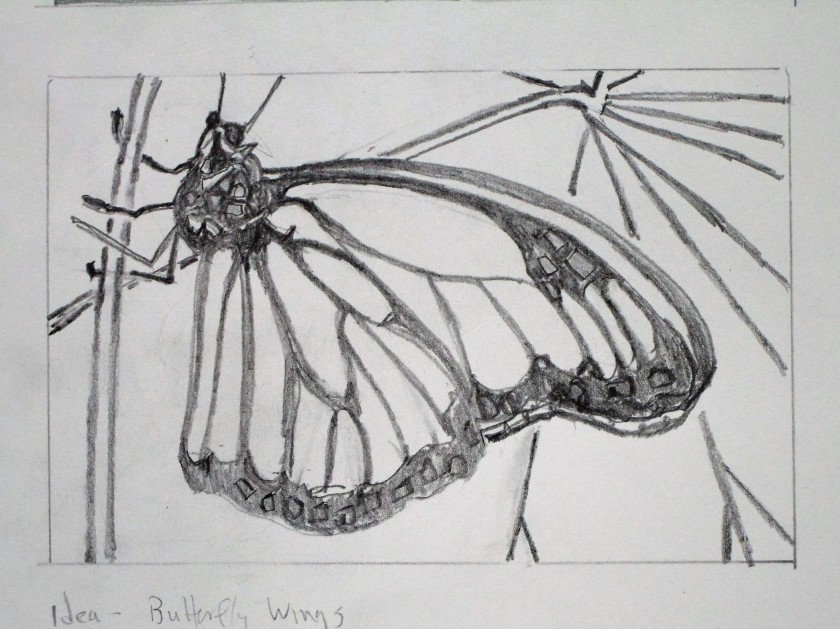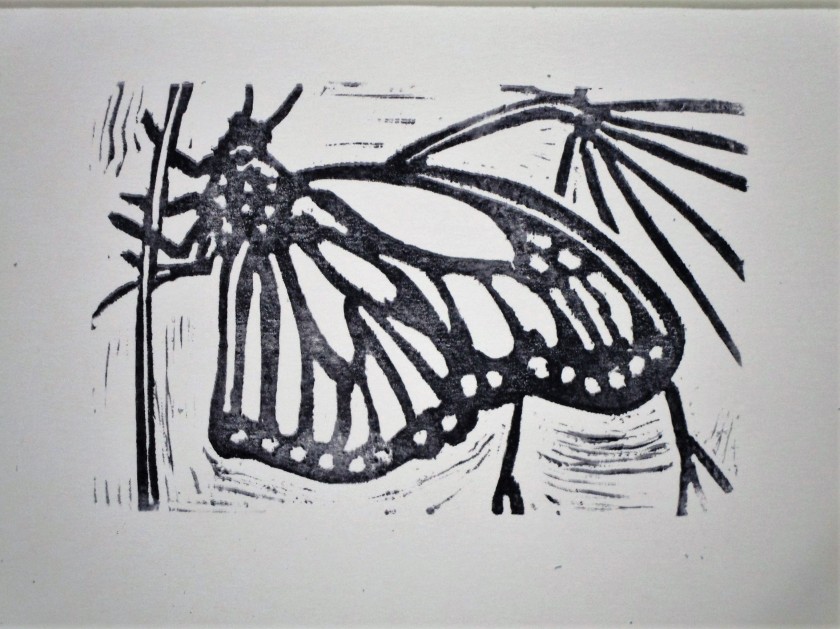Today I got out my lino-cutting tool to make another stamp based on a sketch. Last week I drew this monarch butterfly, referencing a free-use photograph from UnSplash.

Using tracing paper I transferred the drawing to a softcarve 4 x 6 block. It took me about an hour to carve out the image.

I did a few test prints and touched up the lines a bit. Here is the ink that I chose.

I find the types of stamping ink very confusing. Also, I paid $5 for this pad and there is hardly any ink in it. Eventually I got at least one decent print on a sheet of Canson Smooth Bristol paper.

While there are a few too many “echo lines” for my taste, I decided to carry on. Next came color. I was keen to see how easily paint would go over the permanent ink. I wasn’t terribly concerned that the black would be covered up, since watercolor paint is transparent.

I finished off by adding a little Micron pen – doing some stippling in black and drawing lines in yellow and orange to represent some of the details that I observed in the reference photograph.
I think this came out great. I will probably make several of these prints to use as greeting cards.
If any of you crafters out there in the blog-sphere have a recommendation for printing inks, please share.





